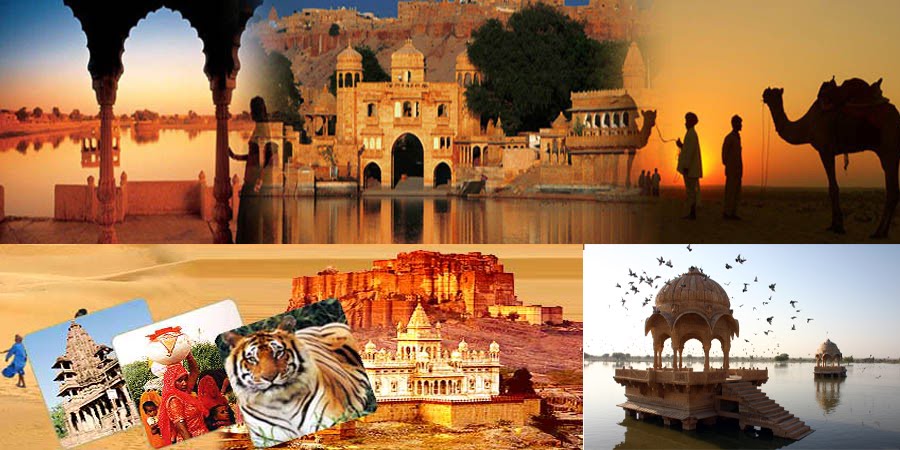Osian Tour
Osian, a historic town located in the Thar Desert of Rajasthan, is often referred to as the "Khajuraho of Rajasthan" due to its exquisite temples. Known for its architectural grandeur and religious significance, Osian offers a unique blend of history, culture, and spirituality. Here’s a detailed tour description of Osian, highlighting its historical significance and main attractions:
Historical Background of Osian
- Ancient Origins: Osian, originally known as Ukeshpur, dates back to the 8th century AD. It was an important trading center and caravanserai during the Gupta and Gurjara-Pratihara dynasties.
- Religious Significance: Osian is renowned for its Hindu and Jain temples, many of which were built between the 8th and 12th centuries. These temples showcase the architectural brilliance of the Pratihara dynasty and are adorned with intricate carvings and sculptures.
Day 1: Arrival and Exploration of Osian Town
- Sun Temple (Surya Temple): Start your tour with a visit to the Sun Temple, one of the most magnificent temples in Osian. Dedicated to the Sun God, this temple dates back to the 8th century and features a beautifully carved entrance, a large assembly hall, and intricate sculptures depicting scenes from mythology.
- Sachiya Mata Temple: Dedicated to Sachiya Mata, the family deity of the Oswal Jain community, this temple is known for its stunning architecture and elaborate carvings. The temple complex includes several smaller shrines and offers panoramic views of the surrounding desert landscape.
Day 2: Jain Temples and Architectural Marvels
- Mahavira Temple: One of the oldest Jain temples in Osian, the Mahavira Temple was built in the 8th century and is dedicated to Lord Mahavira, the 24th Tirthankara. The temple is renowned for its intricate carvings, beautifully sculpted pillars, and serene ambiance.
- Vishnu Temple: Visit the Vishnu Temple, another architectural gem of Osian. This temple is dedicated to Lord Vishnu and features exquisite carvings and sculptures depicting various avatars of the deity. The temple's sanctum houses a stunning idol of Lord Vishnu.
Day 3: Historical Sites and Cultural Immersion
- Harihara Temple: Explore the Harihara Temple, dedicated to Lord Shiva and Lord Vishnu. The temple's unique architecture, combining elements of both Hindu deities, reflects the syncretic religious traditions of the region.
- Pippala Devi Temple: This ancient temple, dedicated to Pippala Devi, a local goddess, is known for its intricate carvings and serene setting. The temple offers a peaceful retreat and a glimpse into the local religious practices.
Day 4: Desert Safari and Outdoor Activities
- Camel Safari: Experience the thrill of a camel safari in the Thar Desert. Ride through the sand dunes, explore the desert landscape, and enjoy the stunning sunset views. The camel safari offers a unique perspective on the arid beauty of Rajasthan.
- Jeep Safari: For a more adventurous experience, embark on a jeep safari through the desert. Visit nearby villages, interact with locals, and witness the traditional lifestyle of the desert communities. The jeep safari provides an exhilarating ride through the rugged terrain.
Day 5: Local Markets and Cultural Experiences
- Osian Market: Explore the local market of Osian, where you can shop for traditional Rajasthani handicrafts, textiles, and jewelry. The market offers a vibrant atmosphere and a chance to interact with local artisans.
- Local Cuisine: Savor the flavors of traditional Rajasthani cuisine at local restaurants and eateries. Don’t miss out on dishes like Dal Baati Churma, Ker Sangri, Gatte ki Sabzi, and the delicious sweets like Ghewar and Malpua.
Cultural Highlights and Special Events
- Folk Music and Dance: Osian hosts regular performances of traditional Rajasthani music and dance. Enjoy the soulful melodies of folk instruments like the sarangi and dholak, accompanied by vibrant dance forms such as Ghoomar and Kalbeliya.
- Festivals: If your visit coincides with local festivals like Diwali, Holi, or Teej, participate in the celebrations. These festivals are marked by colorful processions, traditional rituals, and communal feasts, offering a deep dive into the local culture.
Travel Tips for Osian
- Best Time to Visit: The ideal time to visit Osian is between October and March when the weather is pleasant for sightseeing and outdoor activities.
- Accommodation: Osian offers a range of accommodation options, including heritage hotels, guesthouses, and desert camps. Staying in a heritage property or a desert camp can enhance the experience, providing a sense of the region’s royal past and natural beauty.
- Transport: Osian is well-connected by road. The nearest airport and railway station are in Jodhpur, about 65 kilometers away. Local transportation options include taxis and car rentals.
Key Highlights:
- Historical Significance: Osian’s rich history is reflected in its ancient temples, forts, and other architectural marvels, offering a deep dive into the region’s past.
- Architectural Marvels: The grand temples adorned with intricate carvings and sculptures are a testament to the artistic and architectural prowess of the region.
- Cultural Immersion: The local market, interactions with villagers, and participation in traditional activities provide a deep cultural experience.
- Natural Beauty: The scenic desert landscape, camel safaris, and jeep safaris offer opportunities for outdoor adventures and nature exploration.
Osian, with its blend of historical grandeur, cultural richness, and natural beauty, promises a memorable experience for travelers seeking to explore the lesser-known treasures of Rajasthan. Whether you're delving into the history of ancient temples, admiring intricate carvings, or immersing yourself in local traditions, Osian offers a journey back in time to the opulent era of the Rajputs and the vibrant cultural heritage of Rajasthan.












